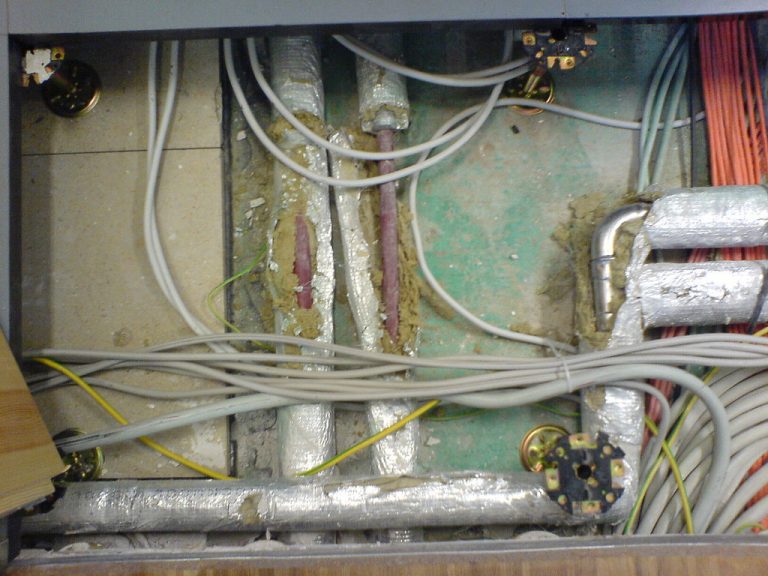Last Updated on March 29, 2024 by Jawad Ali
Small furnace capacitors are a rare sight unless there is a problem. It’s likely that your HVAC service provider recently determined that your furnace has a bad or faulty capacitor if you’re looking for information on a furnace capacitor. Like other industries, HVAC comes with its jargon. It can be difficult to comprehend your service technician’s expert diagnosis if you are unfamiliar with the technical jargon.
What Is a Furnace Capacitor?
A furnace capacitor controls the power input to the furnace’s motors. Blower motors and inducer motors are two examples of these motors. A furnace capacitor can be seen as a small component installed on some furnaces’ blower fan compartments.
Several capacitors are frequently used in furnaces to control power to various components. Start capacitors and run capacitors are the two categories into which capacitors can be divided. The terms “start” and “run” may also be used to describe capacitors by your HVAC service expert, so let’s take time to define these terms. Run capacitors are capacitors that are used in furnaces. Run capacitors control the flow of power to an active component.
Read More: How To Properly Ease Your Iphone’s Speaker Without Adverse It
What does the furnace capacitor do?
The more you understand how your heater works, the more equipped you’ll be to direct the repairman when there’s a problem. For instance, “capacitor” may have come up in conversation regarding your furnace. But what precisely does the furnace’s capacitor do? Your furnace’s fan motor has capacitors.
They are typically split into two categories, offering the furnace equipment electricity at specific times. The heater’s motor can start up more quickly when a start capacitor is used, which is the first type of capacitor. All furnaces, HVAC systems, and AC units also use run capacitors.
The fan motors receive a constant flow of electricity from them. Both capacitors must be in good condition for your furnace to function properly. If not, your furnace won’t be able to heat your home. Qualified professionals with a multimeter or equivalent equipment can typically locate and fix electrical issues.
What happens when a gas furnace blower’s capacitor goes bad?
Hot air is blown into your home through the ducts by the blower motor in your furnace. The energy required by the blower to operate properly is stored by its capacitor, which functions like a battery. However, a damaged capacitor will prevent your blower from working properly and could endanger your family’s comfort.
There are a variety of indications and signals that a capacitor is defective. Check out some of them below:
No Power
If the capacitor is malfunctioning, the blower cannot function properly. If you suspect the capacitor is the problem, check it as soon as your gadget stops working. Before checking, ensure the heating system’s fuse is switched ON. If you receive no response from your capacitor, it is deteriorating. For a complete analysis and diagnosis of your capacitor, contact the experts.
Humming Sounds
The blower’s humming noises indicate that the capacitor is experiencing electrical issues. If you want to comprehend the issue, you have no alternative except to pay great attention to your blower. To do this, raise your thermostat and watch for the blower to activate on your heating system. Lean near your blower’s housing after prying open the access panel on your furnace with a screwdriver to hear the odd noise coming from inside.
Erratic motor operation
The capacitor functions as a battery by holding a charge to turn on the blower motor. Even after the motor starts running, the capacitor receives all electrical input. Your blower motor may run slower than usual, get hot, and short cycle due to a faulty capacitor. The capacitor may cause the unpredictable starting and stopping of your furnace.
Start and run capacitors may be independent components in older furnace models. When the run capacitor takes over to manage the power running to the motor, the start capacitor is in charge of providing the extra burst of electricity needed to start the motor. The diagnosis and repair process is simplified for our service experts by the dual-function split capacitor motors seen in more recent furnace models.
How to Read the Voltage and MFD of Your Capacitor for a Replacement
The 120 volts, 220 volts, and microfarads are used to rate capacitors. Micro Farads are commonly referred to as “uf” and occasionally “MFD.” The micro farad (uf) and voltage must match to purchase a new one. Only upon fitting into the furnace will the packaging or size be important. The voltage and uf will be written on a label on the capacitor’s side. An image of a five uf, the 370-volt capacitor, is shown below. These two numbers can be used to purchase a replacement capacitor.
How long do capacitors in furnaces last?
Capacitors in contemporary furnaces are made to last for ten to twenty years. However, the longevity of a capacitor can be reduced for several reasons, including Long-term heat exposure can cause harm to a capacitor because of its susceptibility to deterioration.

